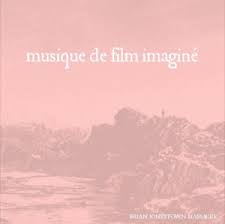Anton Newcombe takes us on a trip to the dark side of the French New Wave with this Musique de Film Imaginé. Signed as Brian Jonestown Massacre, but admittedly a creature of its leader only — working, as stated in the official press release, "on the band’s behalf" — the album was conceived as an original soundtrack for a non-existent movie, inspired by the Parisian Rive Gauche film culture of the 50s and 60s. On this cinematic adventure, the Californian musician, now based in Berlin, where the album was recorded, is joined by two women who had previously crossed the Ocean in the opposite direction, both having moved from Europe to Los Angeles: goth-pop queen Stéphanie ‘Soko" Sokolinski and Italian actress and singer, Asia Argento. Though the two guests only contributed with vocals on an otherwise instrumental record, it is impossible not to think of the bleak triangular force that these three infused into the mood of the album.
There is no doubt this is a soundtrack fitting to a Alain Resnais film, rather than those by Truffaut or Godard. There’s almost nothing left of the acid psychedelic sound that defined the Brian Jonestown Massacre aesthetic so far, only slightly filtering, though in a 60s cocktail sound disguise, through ‘Elle S’Échappe’. Now everything is dark and obscure, ghostly, as if moving in slow motion, bursting here and there in a few powerful and desperate explosions, mainly when Soko and Argento get to sing.
"Hallelujah, let’s sing my resurrection" is the translated chorus (all the lyrics are in French) of ‘Philadelphie Story’, the song given to Sokolinski. It’s named, funnily enough, after a 1940 romantic comedy directed by George Cukor, a director whose work would be rehabilitated by its New Wave colleagues as pure modernity genius twenty years later, and is a slow and gloomy march that feels more like a descent to hell than a re-birth and return to life. Argento’s whispering hoarseness is, instead, the completion to ‘Le Sacre du Printemps’, this time borrowing its title from Igor Stravinsky’s famous ballet, a dark celebration of love and its possibilities. While ‘Bonbon Deux’, the last big crescendo of the album, reminds of a silent, stripped down version of the great musical landscape of Sigur Rós’ ‘Hoppípolla’.
Anywhere else, it’s all about oboes and bassoons; smooth, glassy, suspended sounds that linger on scenes that you have to direct in your mind, serving as possible themes for a ‘ballet mécanique’, black and white representation of ‘Coppélia;’ a mute, fin-de-siecle epic historical drama; or some visionary, horror Expressionist story. As Newcombe suggests, "now it’s your turn, you are the listener to imagine the film."
<div class="fb-comments" data-href="http://thequietus.com/articles/17727-brian-jonestown-massacre-musique-de-film-imagin-review” data-width="550">


